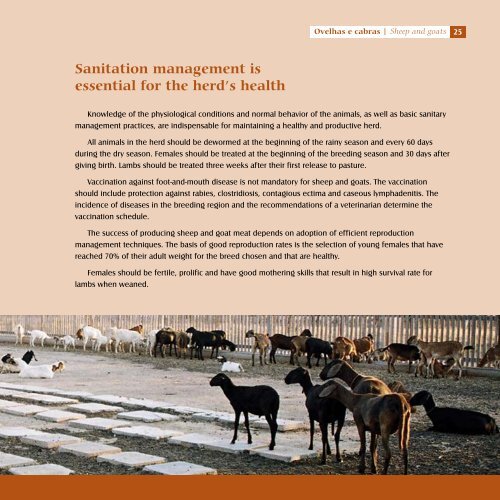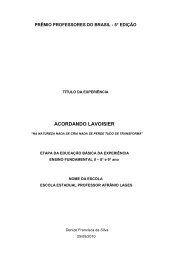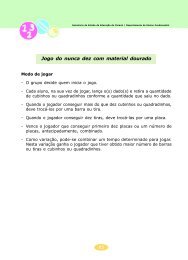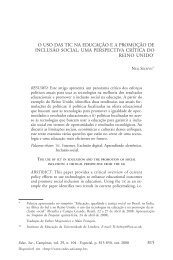Ovelhas e cabras - Portal do Professor - Ministério da Educação
Ovelhas e cabras - Portal do Professor - Ministério da Educação
Ovelhas e cabras - Portal do Professor - Ministério da Educação
Create successful ePaper yourself
Turn your PDF publications into a flip-book with our unique Google optimized e-Paper software.
Sanitation management is<br />
essential for the herd’s health<br />
<strong>Ovelhas</strong> e <strong>cabras</strong> Sheep and goats<br />
2<br />
Knowledge of the physiological conditions and normal behavior of the animals, as well as basic sanitary<br />
management practices, are indispensable for maintaining a healthy and productive herd.<br />
All animals in the herd should be dewormed at the beginning of the rainy season and every 60 <strong>da</strong>ys<br />
during the dry season. Females should be treated at the beginning of the breeding season and 30 <strong>da</strong>ys after<br />
giving birth. Lambs should be treated three weeks after their first release to pasture.<br />
Vaccination against foot-and-mouth disease is not man<strong>da</strong>tory for sheep and goats. The vaccination<br />
should include protection against rabies, clostridiosis, contagious ectima and caseous lymphadenitis. The<br />
incidence of diseases in the breeding region and the recommen<strong>da</strong>tions of a veterinarian determine the<br />
vaccination schedule.<br />
The success of producing sheep and goat meat depends on a<strong>do</strong>ption of efficient reproduction<br />
management techniques. The basis of good reproduction rates is the selection of young females that have<br />
reached 70% of their adult weight for the breed chosen and that are healthy.<br />
Females should be fertile, prolific and have good mothering skills that result in high survival rate for<br />
lambs when weaned.

















